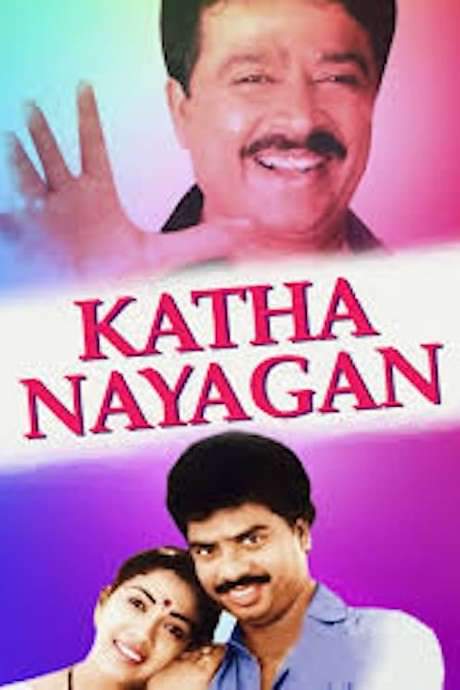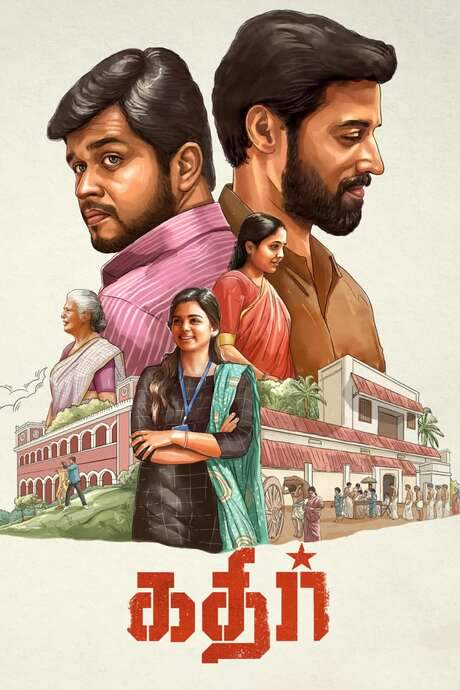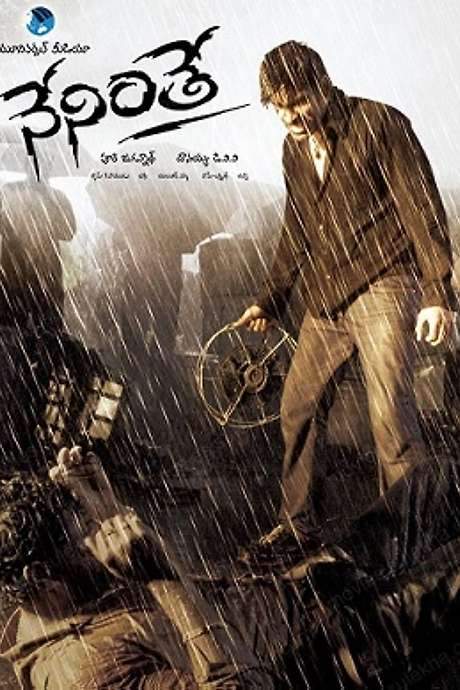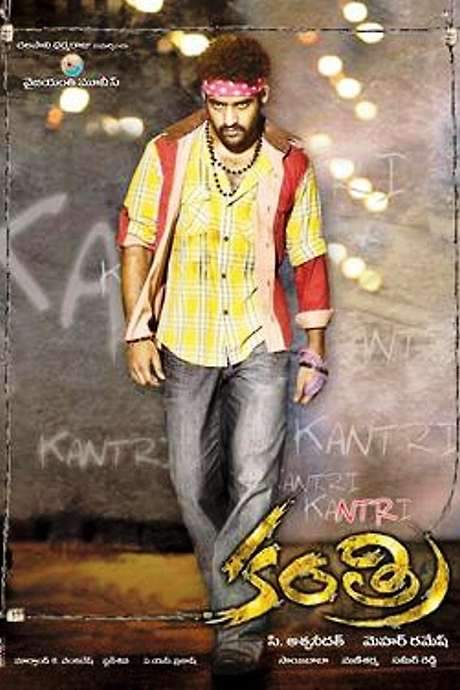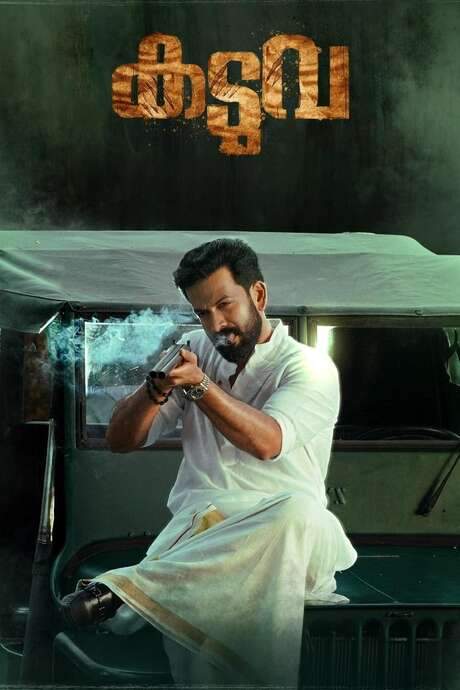
N.T.R: Kathanayakudu
Based on the journey of the legendary Telugu actor, filmmaker and ex-Chief Minister Late Taraka Rama Rao Nandamuri.
Warning: spoilers below!
Haven’t seen N.T.R: Kathanayakudu yet? This summary contains major spoilers. Bookmark the page, watch the movie, and come back for the full breakdown. If you're ready, scroll on and relive the story!
N.T.R: Kathanayakudu (2019) – Full Plot Summary & Ending Explained
Read the complete plot breakdown of N.T.R: Kathanayakudu (2019), including all key story events, major twists, and the ending explained in detail. Discover what really happened—and what it all means.
In 1984, Basavatarakam asks Nandamuri Harikrishna for a photo album of her husband, N. T. Rama Rao from when he was younger, a gesture that quietly foregrounds the film’s obsession with memory, lineage, and the making of a legend. The narrative then travels back to 1947, when Rama Rao works as a sub-registrar at the Guntur sub-courts, a beginning that the film patiently contrasts with the sweeping, almost mythic arc of his later life. He quits that stable post and decides to chase a dream that seems almost too bright to be true, a dream that would redefine Telugu cinema and, in many ways, the cultural map of a region.
From the outset, the man’s path is supported by two steadfast pillars: a devoted partner and a protective family. Although the original lineages are steeped in affectionate memory, the story highlights how his ideal companion, Basavatarakam, and his loyal brother, Nandamuri Harikrishna, rally behind his ambition. The decision to head to Madras becomes a turning point, a move that thrusts him into the orbit of the film industry and introduces him to a new ecosystem of directors, producers, and fellow stars. On arrival, Rama Rao meets the ambitious and influential scene of Tamil cinema’s neighboring city, and the film shows how casual conversations and chance introductions can alter a life’s trajectory. One pivotal connection is with the director who helps him break into the screen world, and through a sequence of introductions, he lands with a project that sets the stage for a historic ascent.
Though he enters through a cameo in Mana Desam and secures monthly wages within a banner that backs his ambitions, the real catalytic moment comes when a different producer-director duo sees in him a potential that others overlook. The man who will become a household name rises first through a blockbusting project that cements his reputation and earns him the title of the region’s first true Super Star on the Indian screen. The breakthrough changes more than his career; it reshapes where cinema lives, how families rally around it, and how a star can become a symbol for a people’s pride. The narrative shows him moving with his growing family into the Tamil heartland of Madras, and with each success, the public perception of him deepens—from actor to almost sacred public figure.
As the tale advances, a severe drought darkens the Rayalaseema region, and Rama Rao steps into a public role not as a performer but as a leader who unites industry stalwarts and mobilizes donations. His ability to galvanize others underscores a broader transformation: the cinema man begins to cross over from the silver screen to the public sphere, becoming a figure who can mobilize resources for the common good. Yet this period also brings tensions, as disagreements arise with Nagireddy and his allies. The film shows Rama Rao stepping away from certain collaborations and launching his own banner, National Art Theatres, while bringing along his brother and his close associates, including Rukmanandha Rao. The story doesn’t gloss over the frictions; it frames them as part of the gritty, human process of building something enduring in a volatile industry. In this era, his friends—D. Yoganand among them—continue to support his ambitions, even as they navigate the shifting tides of production and studio life.
The pressure and passion of production pull him into ever more ambitious projects. The film recounts the moment when, during the making of a devotional epic, Rama Rao already embodies a persona beyond his own years, captivating audiences with his presence and his willingness to inhabit the mythic role of a divine figure. The industry, fans, and the public begin to credit him with a spiritual magnetism, and the line between actor and deity begins to blur in the public imagination. The narrative suggests that devotion and superstardom feed one another, creating a powerful feedback loop that deepens his legend and cements his standing as a cultural pillar.
Meanwhile, Rama Rao and Akkineni Nageswara Rao become central figures in a growing film empire, and the story documents how their collaborative energy reshapes film culture in the region. The film traces how the two icons’ journeys intertwine, pushing each other to new heights as they navigate the pressures of stardom, production, and the politics of cinema itself. The narrative occasionally nods to the broader network of people around them, including family members and collaborators who help keep the machine running even as personal tragedies, like the loss of a beloved elder son, test the men personally and professionally.
As years roll on, the duo earns national recognition, but the story makes clear that their influence extends far beyond the screen. The government recognizes their contributions with honors such as the Padma Shri, while political dynamics begin to pull at the edges of their public personas. Rama Rao grows increasingly aware of the regional and national identity issues that come with public life, insisting on a sense of pride for the Andhra Pradesh region even as political winds shift. The film uses these moments to show how a cinema icon negotiates a complex relationship with power, fame, and public service.
The political arc thickens as the real-world context intensifies. The public begins to view Rama Rao through the lens of leadership, and a national conversation about identity, language, and regional pride comes to the fore. In this landscape, the tide of politics sways through alliances, family debates, and the evolving careers of those close to him. Nara Chandrababu Naidu emerges as a focal figure in these scenes, illustrating how political futures are often intertwined with cinematic legacies. The film also nods to the lineage of influence surrounding Rama Rao, including collaborations and family ties that sit at the heart of the Telugu Desam Party movement.
In the culmination, the film traces Rama Rao’s bold decision to launch a political party that would bear his name and mission into the public arena, a choice that meets resistance from parts of his own family but earns steadfast support from others who believe in his vision for regional empowerment. The narrative closes by underscoring the enduring partnership between cinema and politics, the enduring bonds of family, and the dream of a cinematic icon who steps onto the political stage to shepherd a new era. In the end, the story leaves the audience with the iconic moment of a party’s birth—an assertion of identity, a testament to perseverance, and a reminder of how a single life can influence the course of a nation. Nara Chandrababu Naidu and Daggubati Venkateswara Rao loom large in the backdrop of this transforming journey, while Nara Bhuvaneswari figures as part of the family story that anchors the drama in human emotion and shared history.
Last Updated: October 01, 2025 at 13:04
Unlock the Full Story of N.T.R: Kathanayakudu
Don't stop at just watching — explore N.T.R: Kathanayakudu in full detail. From the complete plot summary and scene-by-scene timeline to character breakdowns, thematic analysis, and a deep dive into the ending — every page helps you truly understand what N.T.R: Kathanayakudu is all about. Plus, discover what's next after the movie.
N.T.R: Kathanayakudu Timeline
Track the full timeline of N.T.R: Kathanayakudu with every major event arranged chronologically. Perfect for decoding non-linear storytelling, flashbacks, or parallel narratives with a clear scene-by-scene breakdown.

Characters, Settings & Themes in N.T.R: Kathanayakudu
Discover the characters, locations, and core themes that shape N.T.R: Kathanayakudu. Get insights into symbolic elements, setting significance, and deeper narrative meaning — ideal for thematic analysis and movie breakdowns.

Similar Movies to N.T.R: Kathanayakudu
Discover movies like N.T.R: Kathanayakudu that share similar genres, themes, and storytelling elements. Whether you’re drawn to the atmosphere, character arcs, or plot structure, these curated recommendations will help you explore more films you’ll love.
Explore More About Movie N.T.R: Kathanayakudu
N.T.R: Kathanayakudu (2019) Scene-by-Scene Movie Timeline
N.T.R: Kathanayakudu (2019) Movie Characters, Themes & Settings
N.T.R: Kathanayakudu (2019) Spoiler-Free Summary & Key Flow
Movies Like N.T.R: Kathanayakudu – Similar Titles You’ll Enjoy
Nene Raju Nene Mantri (2017) Plot Summary & Ending Explained
Katha Nayagan (2017) Plot Summary & Ending Explained
Narasimha Naidu (2001) Film Overview & Timeline
N.T.R: Mahanayakudu (2019) Plot Summary & Ending Explained
Keanu Reeves: Journey to Success (2003) Complete Plot Breakdown
Kathanayagan (1988) Full Summary & Key Details
Kirathakudu (1986) Movie Recap & Themes
Naradan (2022) Film Overview & Timeline
Kathir (2022) Ending Explained & Film Insights
Karnan (1964) Plot Summary & Ending Explained
Neninthe (2008) Complete Plot Breakdown
Kadha, Samvidhanam Kunchacko (2009) Spoiler-Packed Plot Recap
Naan Kadavul (2009) Detailed Story Recap
Kantri (2008) Story Summary & Characters
Kaduva (2022) Detailed Story Recap








